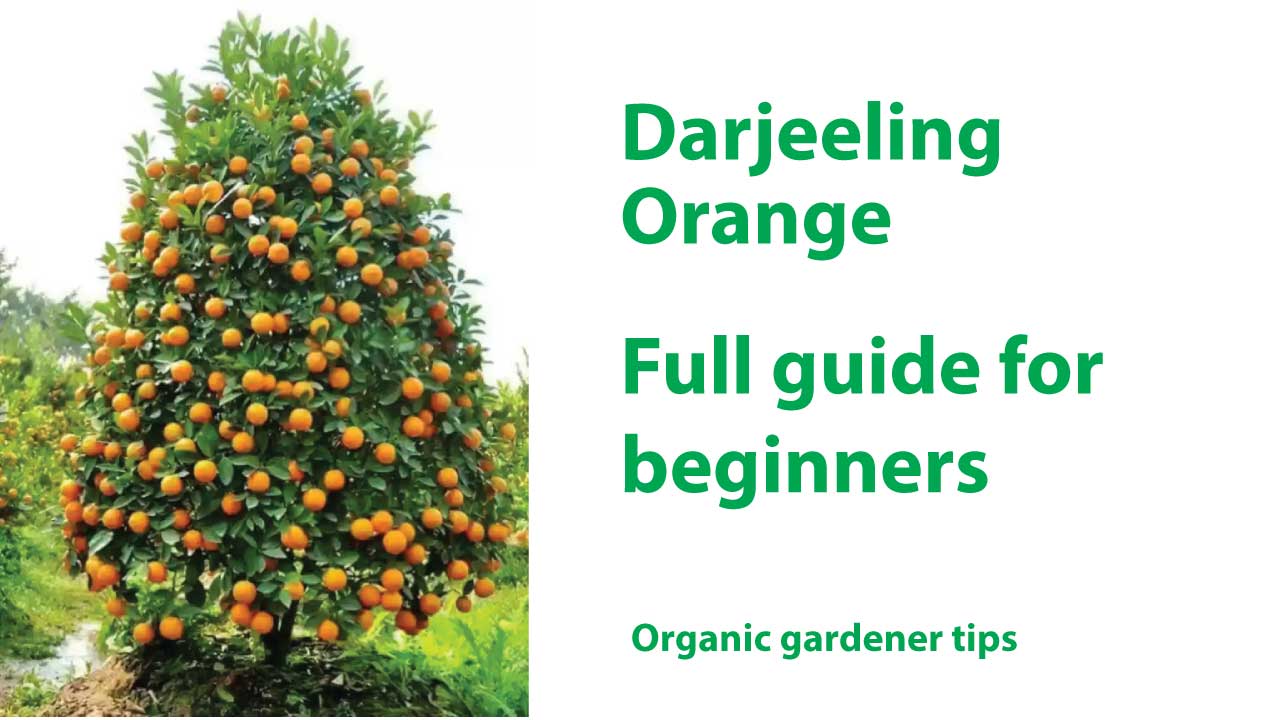Darjeeling, known for its world-famous tea, is also home to a unique citrus treasure—the Darjeeling orange. This lesser-known fruit, cultivated in the misty hills of the Eastern Himalayas, offers a delightful blend of flavor, aroma, and history. In this article, we will delve into the origins, characteristics, cultivation practices, and the benefits of growing Darjeeling oranges, shedding light on why this fruit deserves a place in your garden or kitchen.
Origins and History of Darjeeling Orange
The Darjeeling orange, also known locally as “Nepali orange” or “Darjeeling Mandarin,” has a long history in the Eastern Himalayan region. Believed to have been introduced by traders from China centuries ago, this orange variety has since adapted to the unique climate and soil conditions of Darjeeling and its neighboring regions, including Sikkim and parts of Bhutan.
Grown at elevations ranging from 1,000 to 2,000 meters above sea level, Darjeeling oranges thrive in the cool, temperate climate of the Himalayan foothills. The region’s well-drained, loamy soils, combined with abundant rainfall and misty mornings, create the perfect environment for producing oranges with a distinctive flavor and aroma.
Distinctive Characteristics of Darjeeling Orange
Darjeeling oranges are renowned for several unique characteristics that set them apart from other citrus varieties:
- Flavor and Aroma: The flavor of Darjeeling oranges is a perfect balance of sweetness and mild acidity, with a subtle hint of spiciness that reflects the unique terroir of the region. The aroma is fresh and citrusy, making it a refreshing choice for eating fresh or using in culinary creations.
- Appearance: The fruit is medium-sized, with a bright orange to deep yellow skin that is slightly rough and easy to peel. The segments are tender and juicy, with a vibrant orange color that adds visual appeal.
- Seasonality: Darjeeling oranges are typically harvested from November to January, making them a prized winter fruit. The cooler temperatures during this period contribute to the fruit’s intense flavor and juiciness.
- Climate Adaptability: While Darjeeling oranges are best suited to the cool, temperate climates of the Himalayan foothills, they can also be grown in similar climates with well-drained soil and sufficient rainfall.
Cultivation Practices for Darjeeling Orange
Growing Darjeeling oranges requires specific practices tailored to their unique environmental needs:
- Soil Preparation: Darjeeling oranges prefer well-drained, slightly acidic loamy soils. Before planting, enrich the soil with organic compost or well-rotted manure to improve fertility and structure.
- Planting Location: Choose a location that receives plenty of sunlight, but is protected from strong winds and frost. Hillsides with good drainage are ideal, as they prevent waterlogging, which can harm the trees.
- Watering: Regular watering is essential, especially during the dry season. However, avoid overwatering, as it can lead to root rot. Mulching around the base of the trees helps retain soil moisture and prevent weed growth.
- Fertilization: Apply organic fertilizers, such as compost or vermicompost, during the growing season. A balanced fertilizer containing nitrogen, phosphorus, and potassium (NPK) can also be used to support healthy growth and fruit production.
- Pruning: Prune the trees regularly to maintain their shape, remove dead or diseased branches, and promote air circulation within the canopy. This helps reduce the risk of fungal infections and encourages better fruiting.
- Pest and Disease Management: Darjeeling oranges are susceptible to pests like aphids, citrus leaf miners, and fruit flies. Organic insecticides or neem oil can be used to control infestations. Regular monitoring for signs of disease, such as citrus canker or root rot, is crucial for maintaining tree health.
- Harvesting: The fruits are ready for harvest when they reach a bright orange color and are firm to the touch. Handle the fruits gently to avoid bruising, and store them in a cool, dry place to prolong their shelf life.
Benefits of Growing Darjeeling Orange
Growing Darjeeling oranges offers several benefits, both for personal enjoyment and economic gain:
- Nutritional Value: Darjeeling oranges are rich in Vitamin C, antioxidants, and dietary fiber. Consuming these oranges regularly can boost the immune system, improve skin health, and aid digestion.
- Culinary Uses: The sweet-tangy flavor of Darjeeling oranges makes them a versatile ingredient in the kitchen. They can be eaten fresh, juiced, or used in a variety of dishes, including salads, desserts, and savory recipes. The zest and juice add a burst of citrusy freshness to any dish.
- Economic Potential: The growing demand for organically produced and region-specific fruits like Darjeeling oranges presents a lucrative opportunity for farmers. These oranges are prized for their unique flavor, and can fetch premium prices in local and international markets.
- Environmental Sustainability: Cultivating Darjeeling oranges using organic methods contributes to the sustainability of the region’s delicate ecosystem. By avoiding chemical pesticides and fertilizers, farmers can help preserve the biodiversity and natural beauty of the Himalayan foothills.
- Cultural Significance: Darjeeling oranges are an integral part of the local culture and economy. They are often used in traditional celebrations and festivals, symbolizing prosperity and good health. Growing these oranges helps preserve the region’s agricultural heritage and supports local communities.
Conclusion
The Darjeeling orange is a citrus gem that offers a unique combination of flavor, aroma, and history. Whether you’re a gardener looking to diversify your citrus collection or a foodie in search of exotic flavors, Darjeeling oranges are a worthy addition to your garden or kitchen. By following the recommended cultivation practices, you can enjoy a bountiful harvest of these delightful fruits, while also contributing to the preservation of a cherished Himalayan tradition.
Happy gardening, and may your Darjeeling orange trees thrive!
